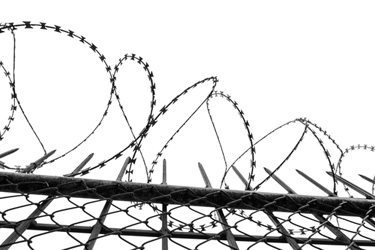Why Did They Seek Abortions There? How Abortion Bans Threaten Women’s Lives
Around the world — even here in Pennsylvania — women face obstacles to legitimate medical care, including preventive services like contraception, prenatal care and safe abortion care. However, such obstacles — legal and financial barriers, social stigma or language barriers — do not affect all women equally.

Editor’s note: This article, being republished in April 2013, was originally published by Rewire in 2011 when the details about illegal abortions performed by Dr. Kermit Gosnell first became clear.
It became tragically clear this week that hurdles to safe, legal abortion can prove life threatening. In West Philadelphia, Karnamaya Mongar lost her life in the horrific facility where Dr. Kermit Gosnell killed and maimed immigrant women and women of color seeking to end unwanted pregnancies. She is one of tens of thousands of poor women who die every year at the hands of butchers and quacks. We sometimes comfort ourselves with the thought that those deaths don’t happen here. But clearly they can.
Around the world — even here in Pennsylvania — women face obstacles to legitimate medical care, including preventive services like contraception, prenatal care and safe abortion care. However, such obstacles — legal and financial barriers, social stigma or language barriers — do not affect all women equally.
It is poor women, young women, women of color and immigrant women who bear the burden of these restrictions, particularly federal bans on funding for abortion care. These bans – such as the Hyde Amendment that affects Medicaid and the international Helms Amendment that affects our foreign aid – exacerbate the circumstances that lead women to facilities like the West Philadelphia clinic in the first place.
In Nepal, where Mongar had emigrated to the U.S., the U.S. Government has placed hurdles to safe abortion too great for some of the country’s poorest women. While the Nepali government works to ensure women’s access to safe, legal abortion care in their government health centers, clinics supported by the U.S. Government – a major reproductive health donor in Nepal – can undermine their efforts.
In 2009, a provider at a U.S.-supported clinic in Nepal told an Ipas researcher the story of a woman who came seeking a legal abortion. She was turned away because that clinic, supported by U.S. assistance, could not provide her care. She returned two weeks later with complications from an unsafe abortion.
She was bleeding and had an infect[ion]. …. She has inserted sticks, inserted in the vagina, inside her. She was 23 years old, married, and had 2 children. She had no money and she couldn’t travel. Her husband was in India, she was illiterate, a housewife.
She ultimately survived after emergency treatment, treatment that would not have been necessary had she received the safe, legal procedure that was her right.
In Philadelphia, hemorrhage and infections are also documented in the Grand Jury report in Gosnell’s case. Likewise punctured uteruses, infertility and sepsis found in the report are documented throughout the global south where abortion is inaccessible. And the circumstances of women who seek unsafe abortion – marginalized by poverty, immigration, language – are shared across borders.
Yet the stories of the women who sought care from Gosnell’s facility are similar to the stories of women who are able to secure safe, quality abortion care with the help of the Philadelphia-based Women’s Medical Fund.
In 2007, the Women’s Medical Fund helped a 16 year-old immigrant girl afford a safe abortion. The girl came from Central America to follow her older brother. She was raped by her “coyote” (an individual who facilitates illegal border crossing) along the journey. When she got to Pennsylvania she was living with her brother and some other young men who were working at the mushroom farms outside of Philadelphia. She knew no English, but found her way to a Planned Parenthood whose bilingual staff called Women’s Medical Fund on her behalf.
During the spring of 2010 when Gosnell’s clinic was raided, Women’s Medical Fund received calls from six different women who lived right in that same neighborhood. The support provided by the fund allowed these six to secure abortions from local high-quality abortion providers. Five were mothers. Four were enrolled in Medicaid (which does not cover abortion under Hyde); two had no health insurance at all. Two were receiving unemployment checks and one had just been laid off. One was working at McDonald’s and earning $450/month. $200 of that went toward rent. One was obtaining a protection from abuse order against her violent husband. Another was pregnant due to a rape. One was living in a homeless shelter with her young child. The average monthly income of the six women was $503.
“Pennsylvania is not a Third World country,” writes District Attorney Seth Williams in the Grand Jury Report. But for women marginalized by their circumstances in the Philadelphia area, it may as well be. Certainly, Dr. Gosnell’s victims experienced the horrors of unsafe abortion just like women in the global south.
Financial obstacles may not be the only reason Karnamaya Mongar and untold numbers of other women risked their lives at Gosslin’s West Philadelphia clinic. Certainly stigma plays a role in whether a woman feels she can seek abortion care openly. Distance is another barrier: 35 percent of women in the United States live in counties with no abortion provider. An end to bans on federal funding on abortion does not guarantee that the 20 million women who experience unsafe abortion worldwide every year would instead go to a trained medical provider.
But the Helms and Hyde Amendments are barriers cruelly targeted at poor women, immigrants, women of color and women living in the global south dependant on public health services. Stories highlighted through Gosnell’s grand jury report and the coverage of his West Philadelphia office of horrors should be a clarion call to all of us that poor women deserve better.
